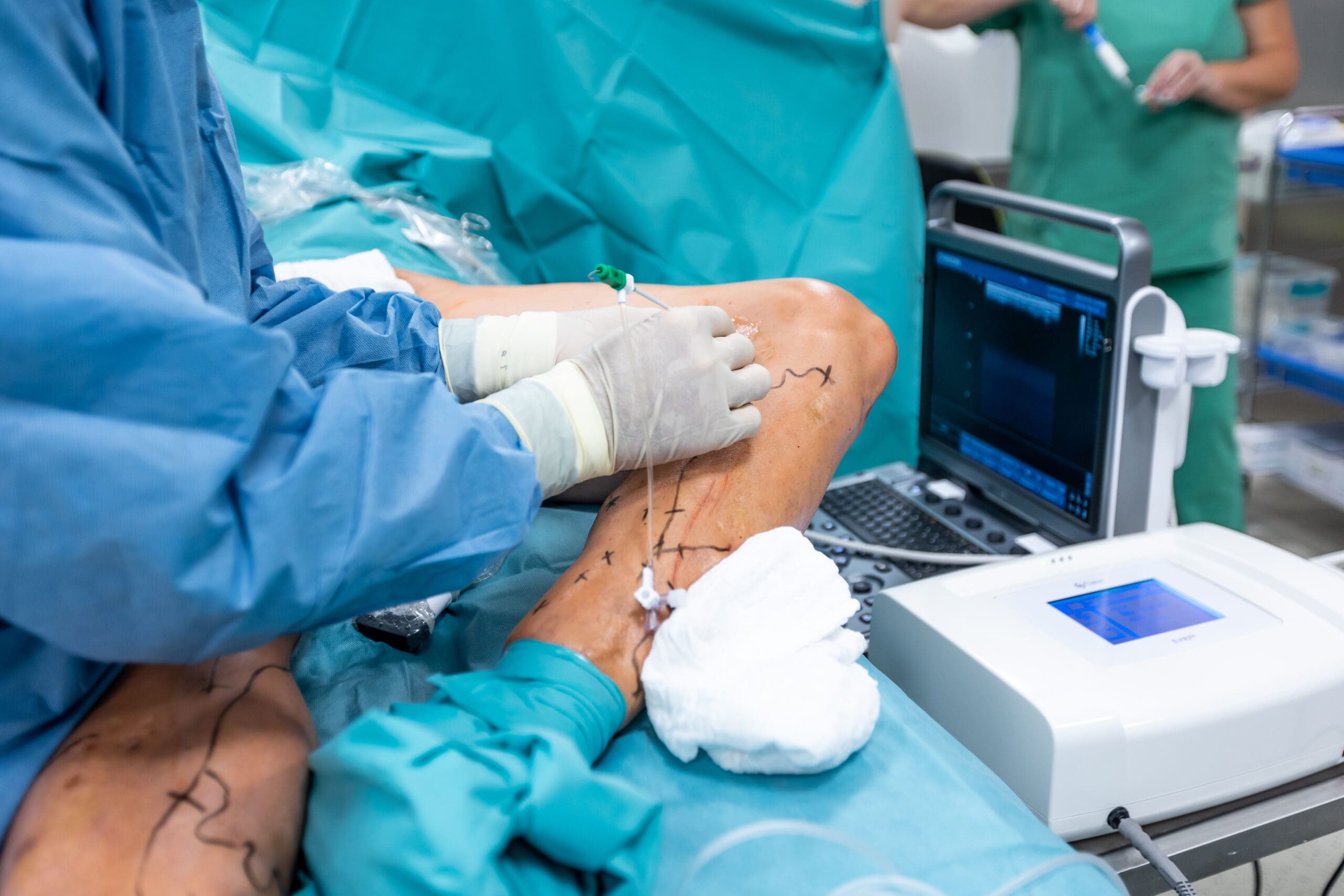Varicose Vein Treatment in Flower Mound
Venous Ablation insufficiency is a very common problem caused by decreased blood flow from the leg veins up to the heart. When the valves weaken and don’t close properly, blood flows backwards and can pool in the legs. Veins that have lost their valve effectiveness become elongated, rope-like, bulged, and thickened, commonly known as varicose veins. Enlarged and swollen blood vessels commonly associated with varicose veins can also cause leg pain, cramping, and itching that can generally worsen as the day goes on. As vein disease progresses darkening and thickening of the skin can occur. If this goes on long enough, even ulceration of the skin can occur.
If you suffer from varicose veins, call our office at (972)736-9980 or request a consultation online.
Radiofrequency Ablation Procedure
For patients with venous insufficiency or varicose veins, radiofrequency (RF) ablation is a minimally invasive procedure performed at North Texas Vein and Vascular that treats the veins with radiofrequency energy which causes them to close. This is minimally invasive outpatient procedure performed in the office by Dr. Handley, an experienced interventional radiologist. Ultrasound imaging is used to guide our treatments of the affected veins as accurately as possible.
Radiofrequency Ablation is similar to Endovenous Laser Ablation in that both use heat energy applied to the inside of the vein to close it. As with Endovenous Laser Ablation, you will be given a prescription for EMLA cream to apply to the leg before the procedure. Patients who take blood thinners will continue to take those medications, as they can reduce the risk of developing a blood clot in one of the deep veins following the procedure.
How is the procedure performed?
The leg is first examined with ultrasound to determine the optimal place to access the vein. The leg will then be cleaned and covered with a surgical drape, and a local anesthetic will be administered. A small sheath will then be placed into the vein using ultrasound guidance through a single, small skin nick. Next, a radiofrequency ablation catheter is place through the sheath and positioned using ultrasound imaging. Numbing medicine (dilute Lidocaine) is then placed all around the vein before delivering RF energy to the vein. After the RF energy has been delivered the vein will seal and the blood will reroute and flow through healthy veins in your legs. After the RF catheter and sheath have been removed, a small steri-strip is placed at the access site.
An ACE bandage and compression stocking is normally placed on the leg following the procedure. This helps the vein to stay closed following the procedure. Dr. Handley will prescribe how long you should wear the compression stocking. You will also be scheduled for a follow-up appointment to ensure the vein is sealed and the treatment was successful.
Request an appointment with Dr. Handley to see if Radiofrequency Ablation is the best treatment option for you.
